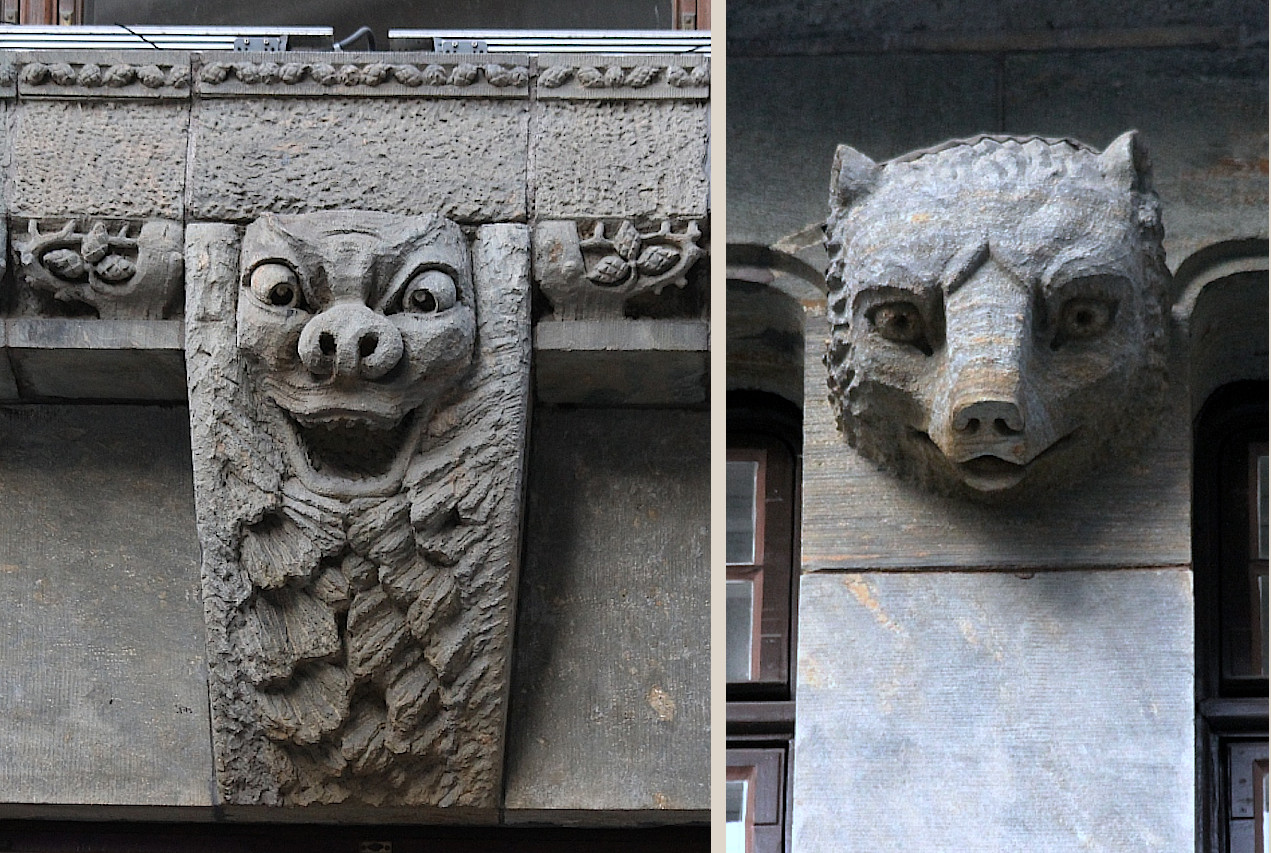Pohjola Insurance Company Building, Helsinki
The word Pohjola comes from the Finnish national mythology Kalevala, and means the most extreme North, a dark and terrible place. However, this name was adopted by the fire insurance company (Palovakuutus-Osakeyhtiö Pohjola), founded on September 9, 1891.
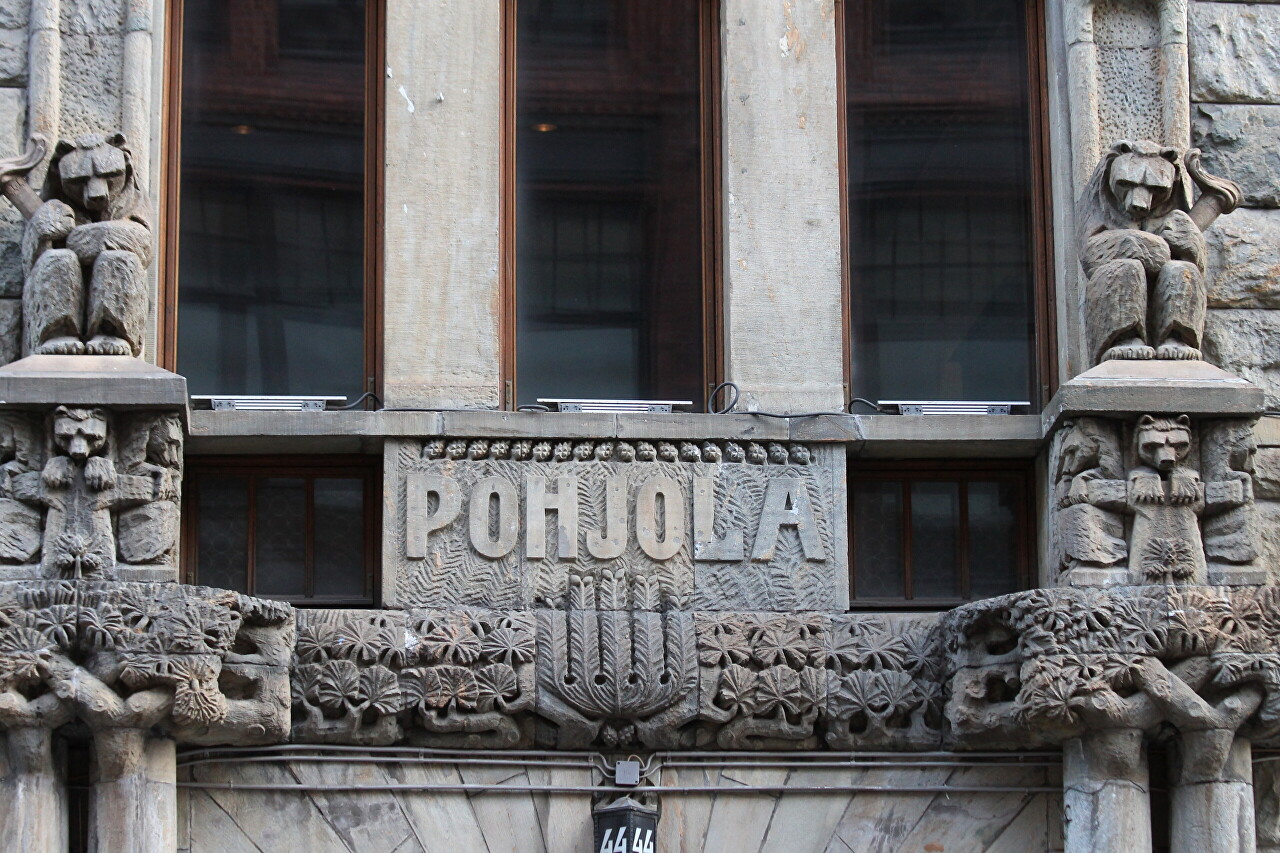
In 1889, the company announced an architectural competition for the design of a headquarters building (Pohjolan toimitalo) at the corner of Alexanterinkatu and Mikoncatu Streets. The winner was the project of the architectural company Gesellius, Lindgren and Saarinen (Gesellius-Lindgren-Saarinen), which was completed in 1901.
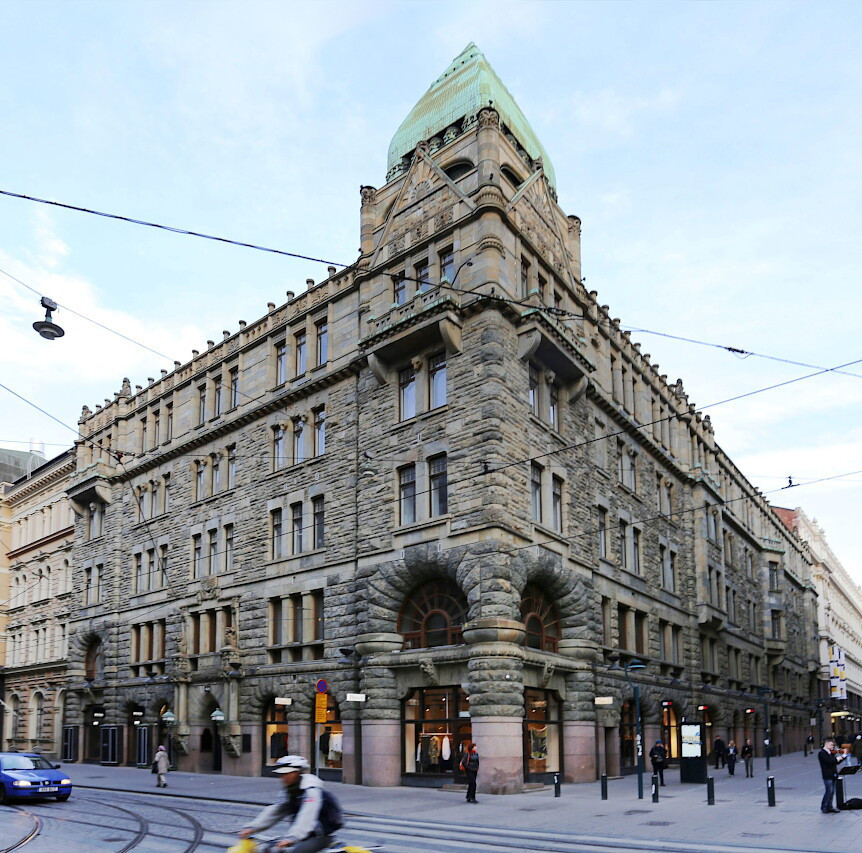
The building is made in the style of national romanticism (northern variety of Art Nouveau) and resembles a massive castle.
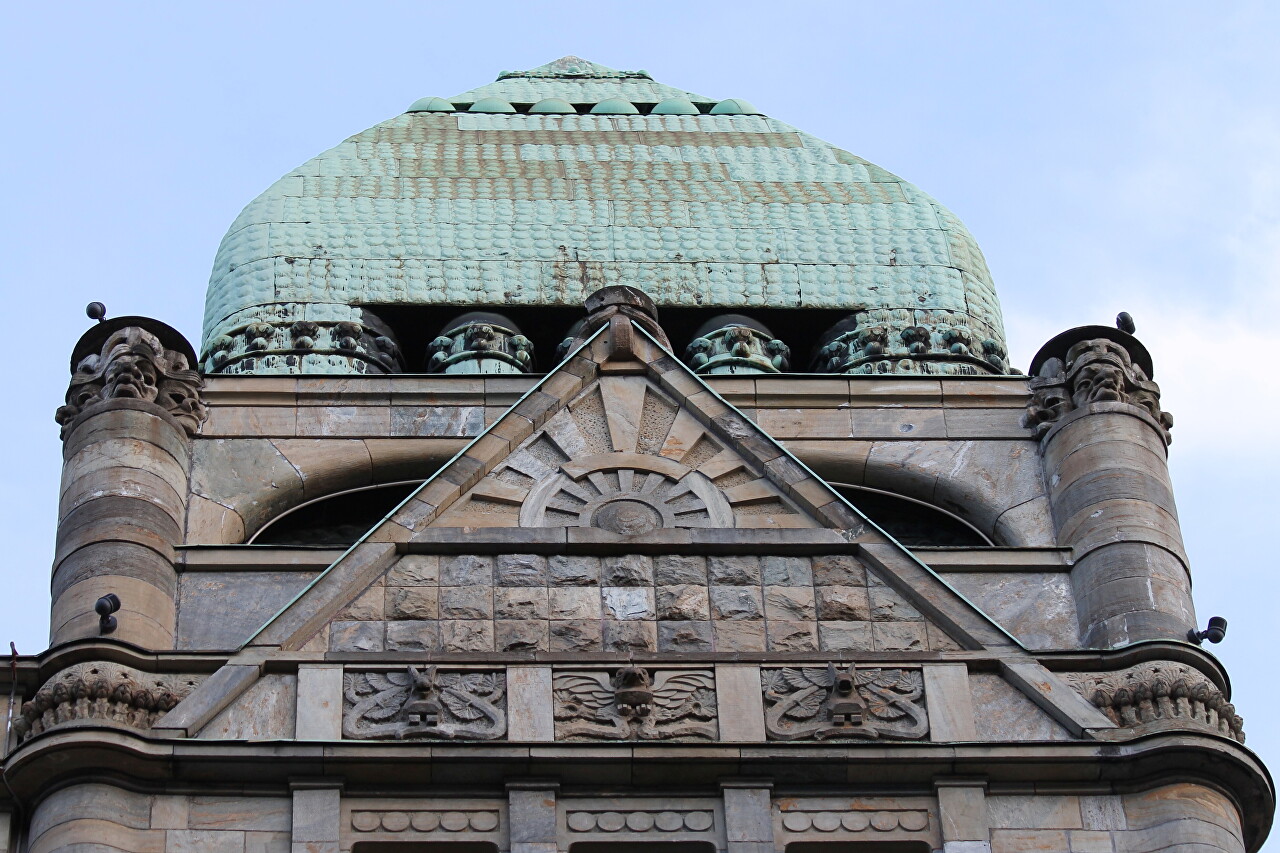
The facades are lined with red granite and serpentine and richly decorated with bas-reliefs. The design of the decor was greatly influenced by one of the managers of an insurance company named Lindgren
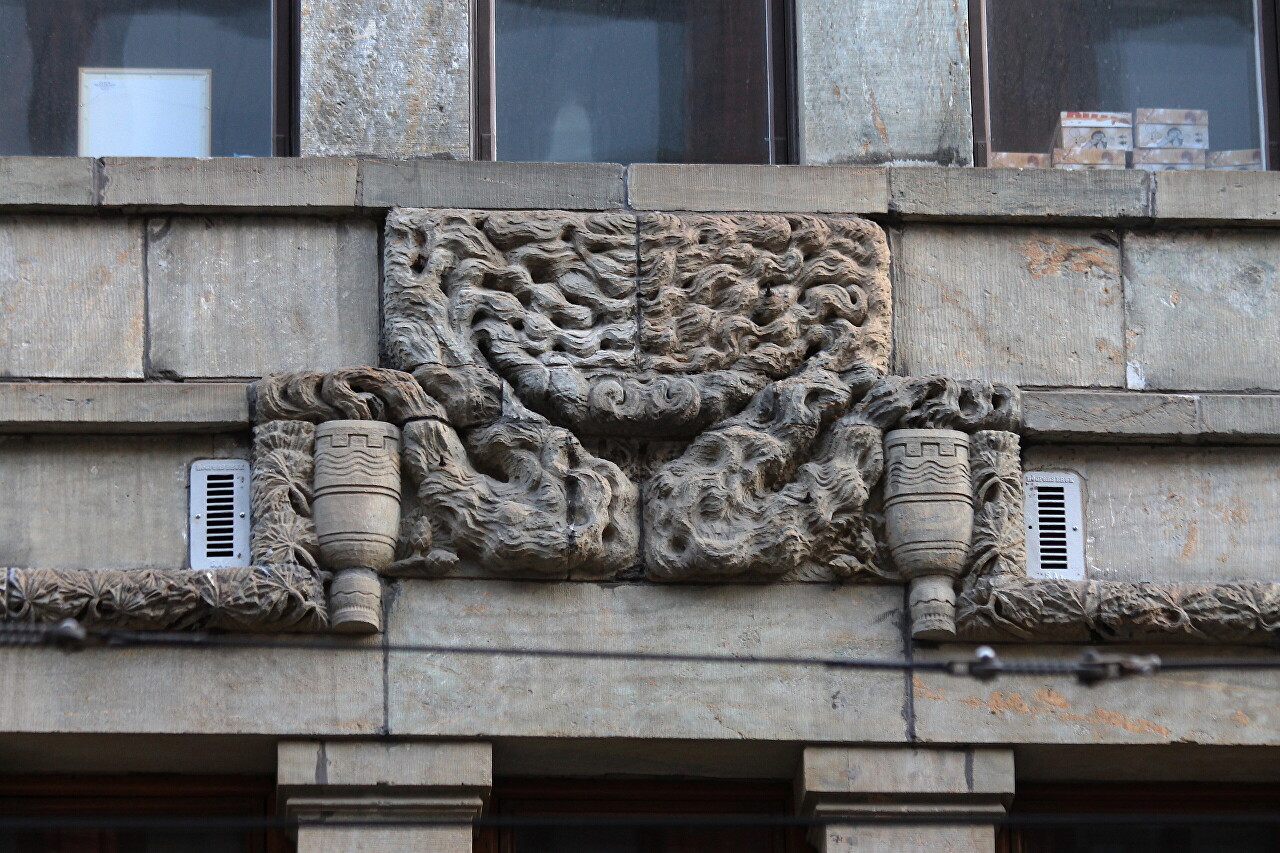
According to the original design, the offices occupied two lower floors, while the remaining three were residential apartments. Massive balconies are available only on the upper floor, their fences are also made of stone. Semi-columns on the sides of the balconies are completed with figures of sitting trolls.
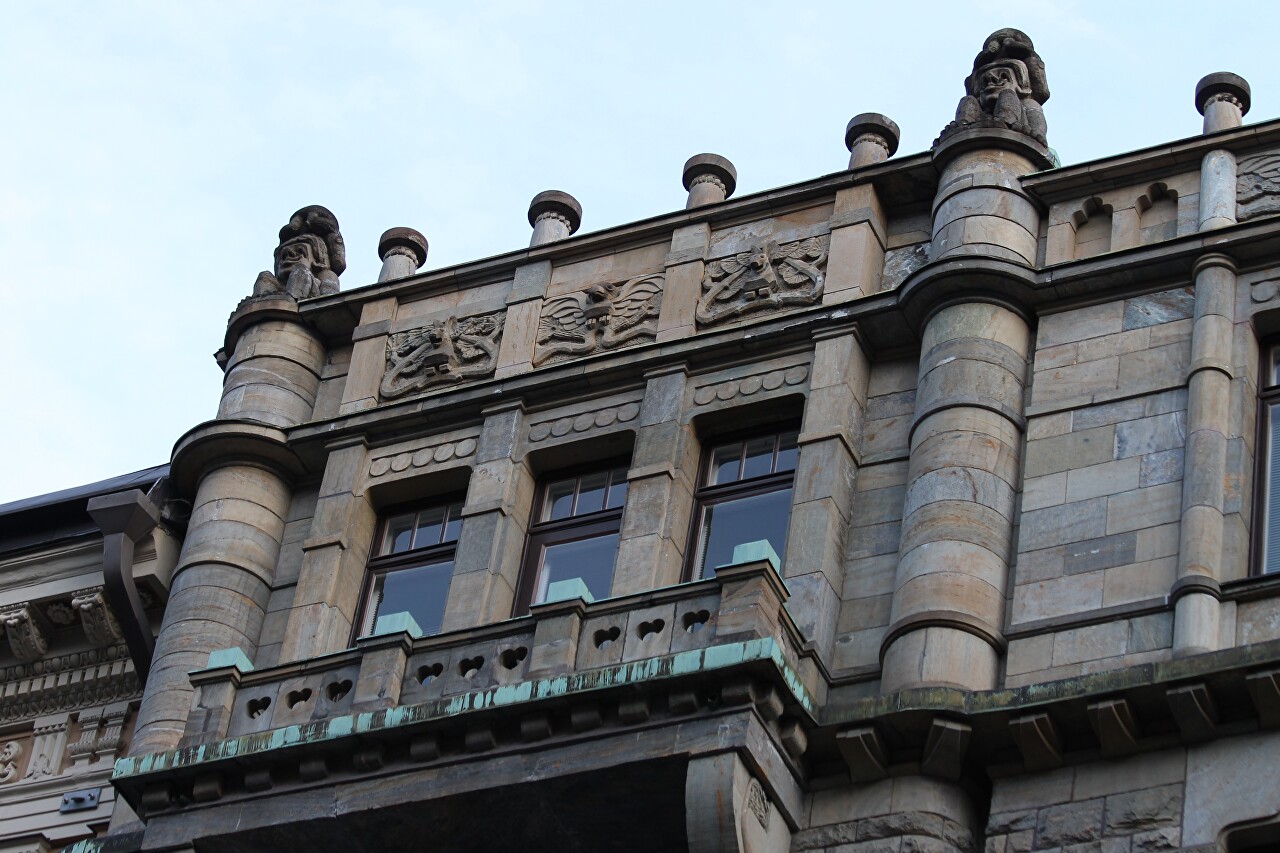
The bas-reliefs depict animals from the Finnish epic-squirrels and eagles, foxes.
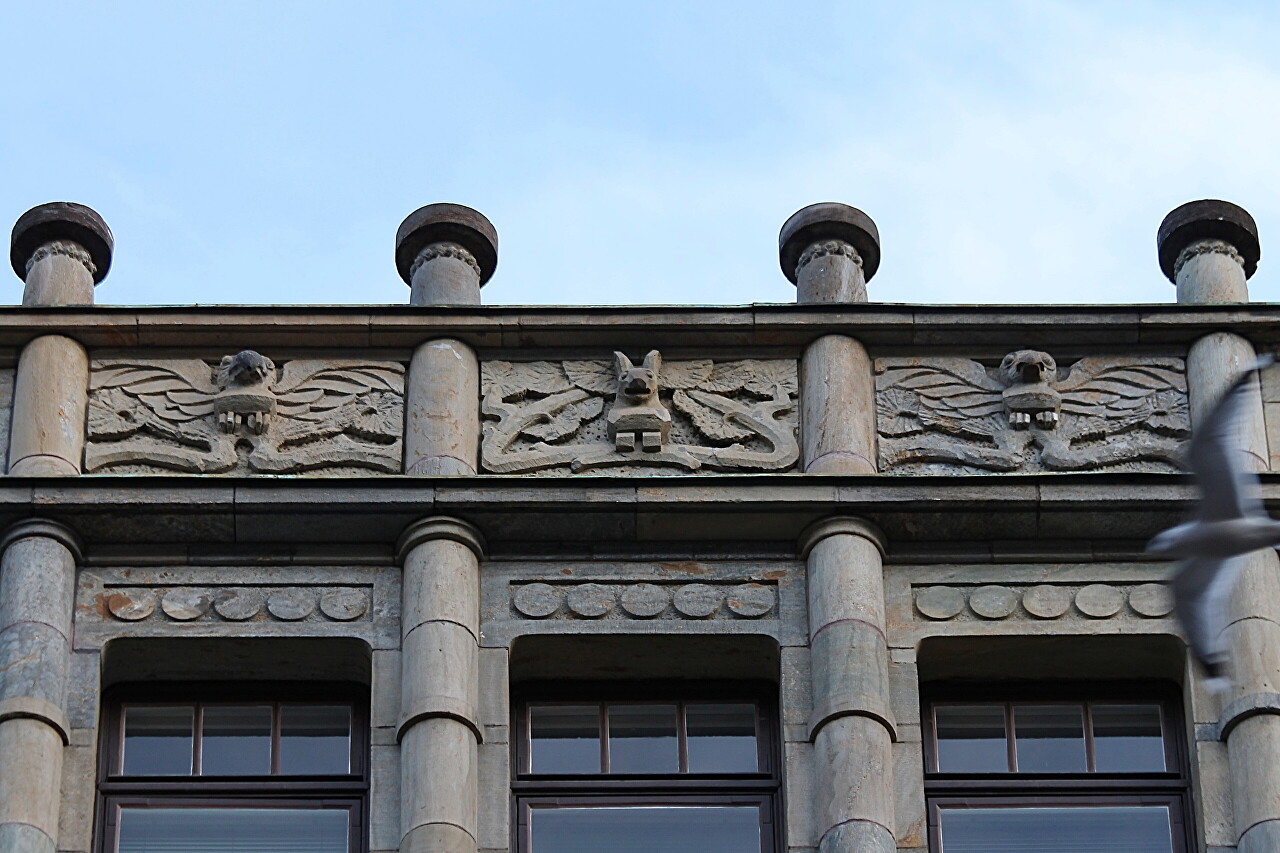
The main portal was designed by Hilda Flodin, who decorated it with figures of polar bears, which are a symbol of the Far North. The cornices are decorated with plant ornaments and images of grimacing people.
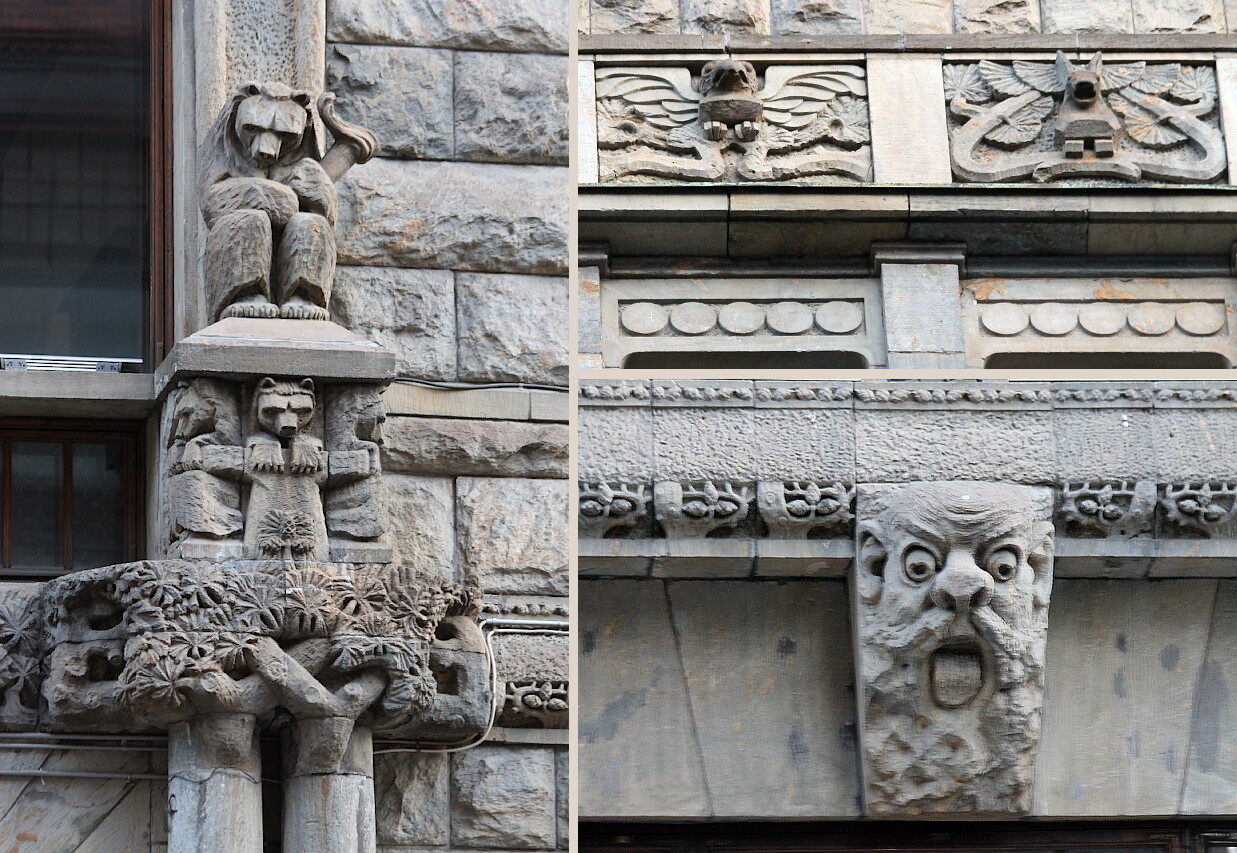
In the second half of the twentieth century, Pohjola's company became a major financial group, and in the late sixties it moved to a new building complex. In 1972, the house was sold to Kansallis-Osake Bank, although Pohjol's operating room remained in operation until 1987. Now this room is used for banquets.
